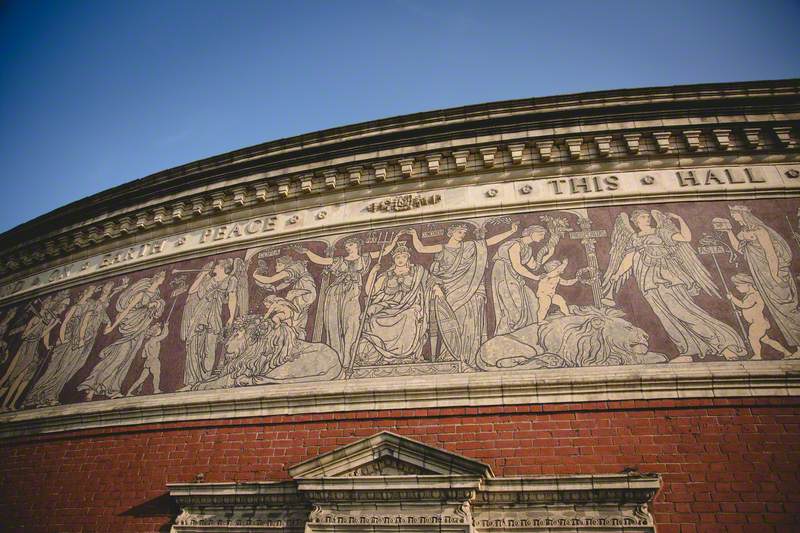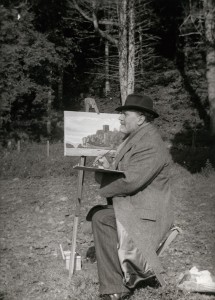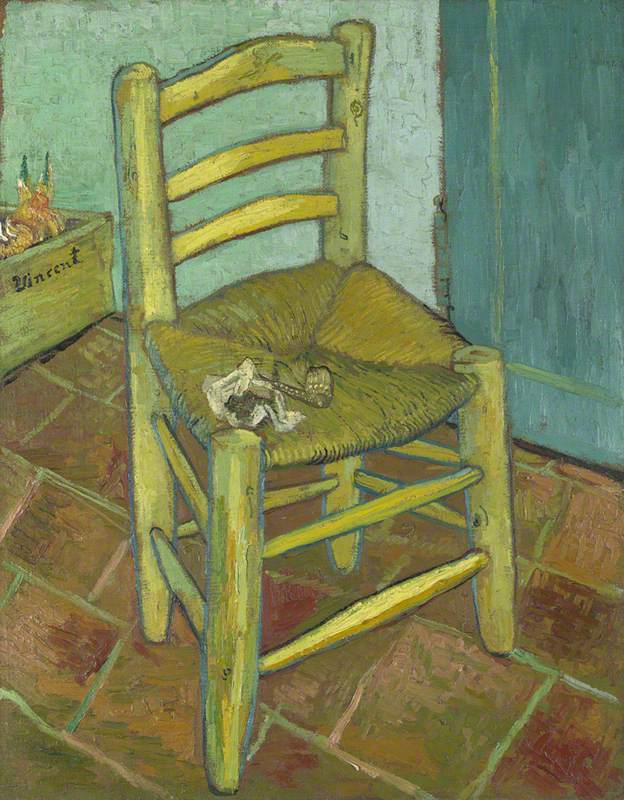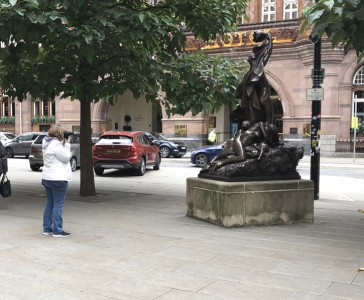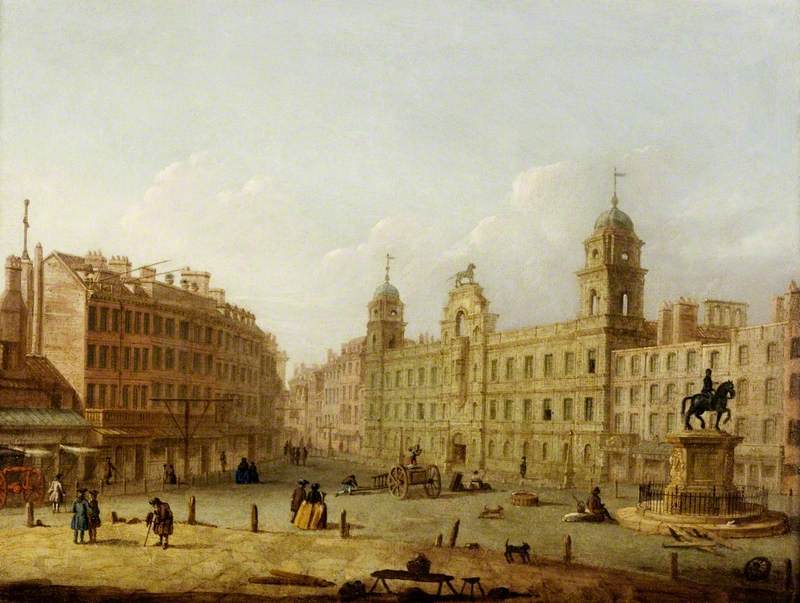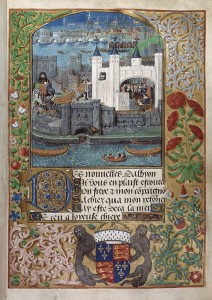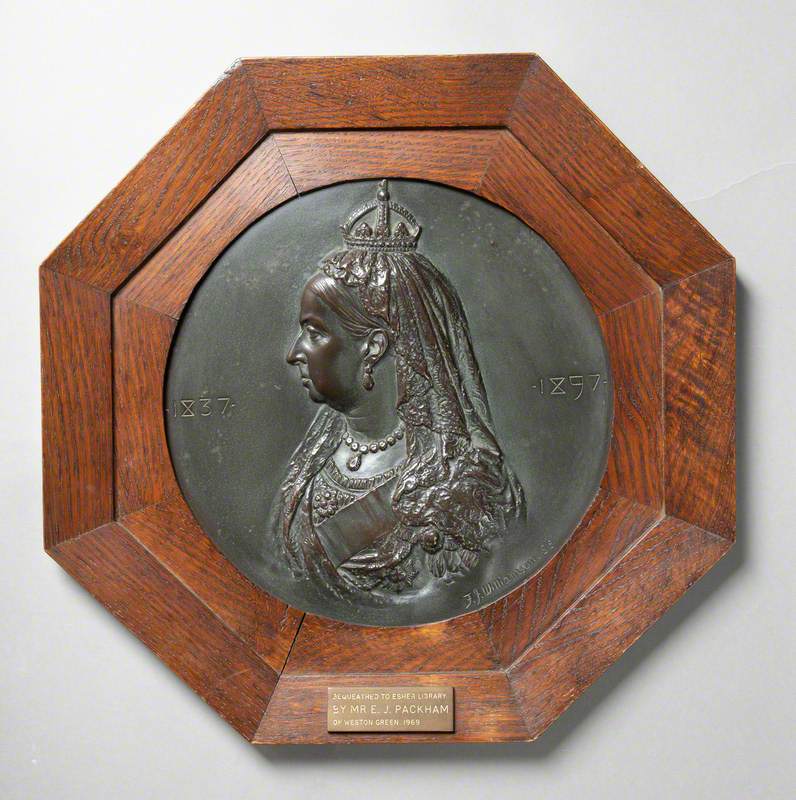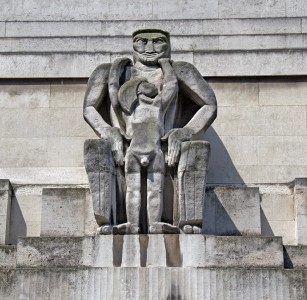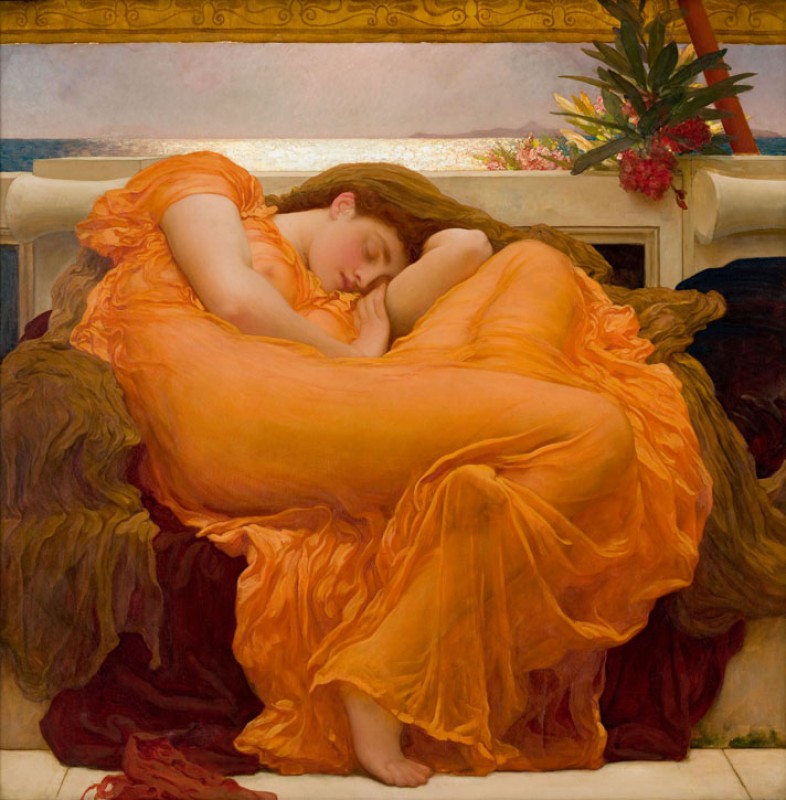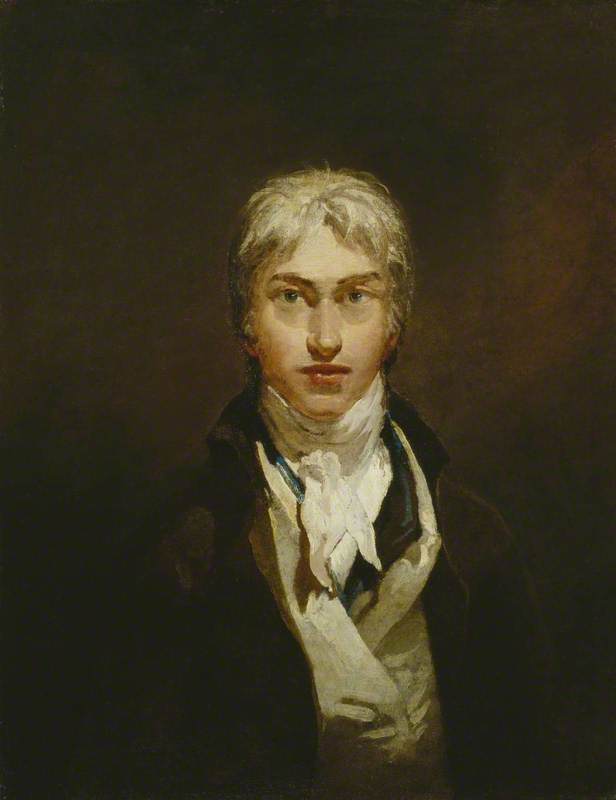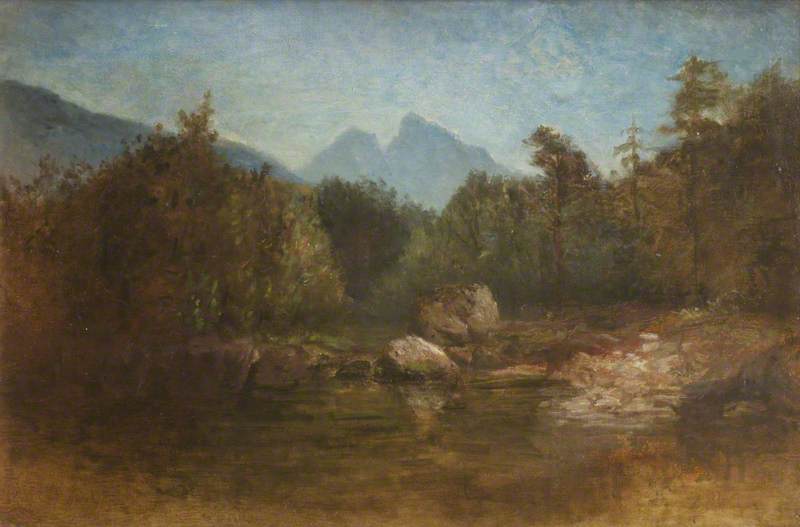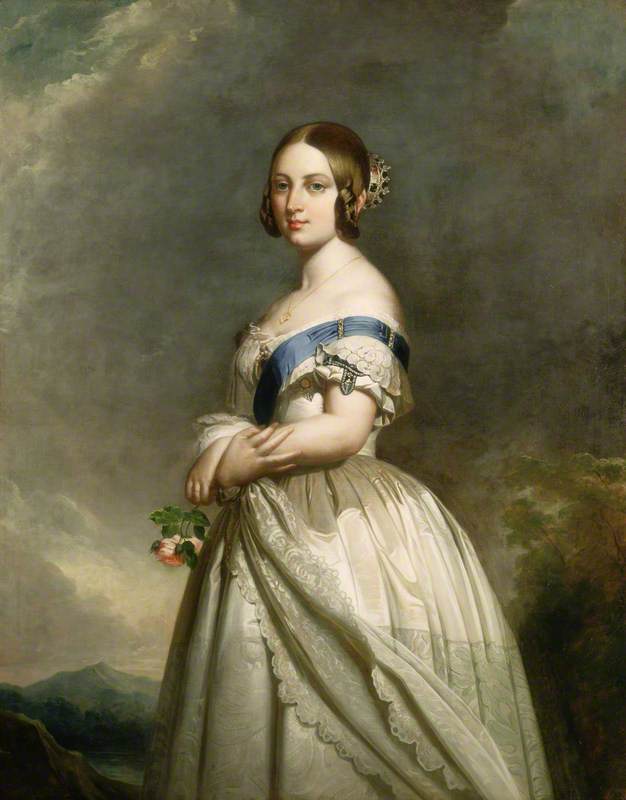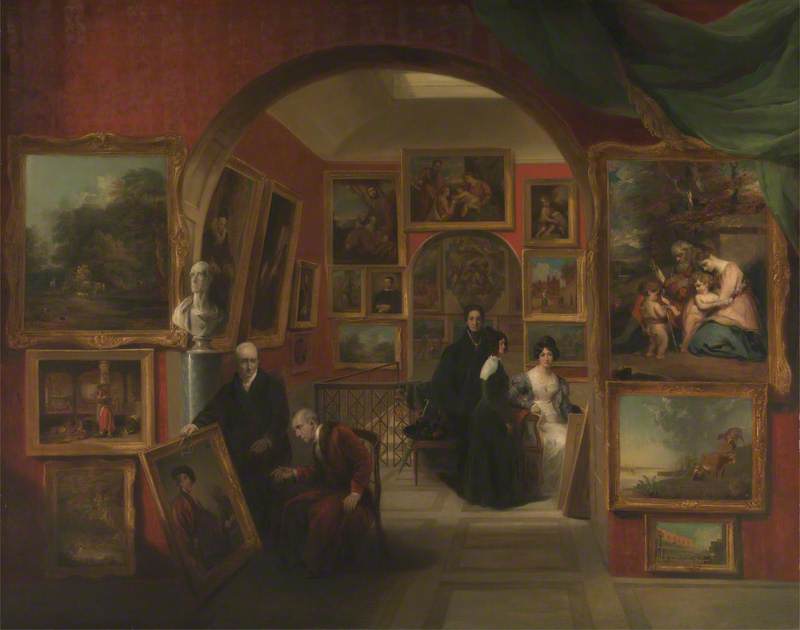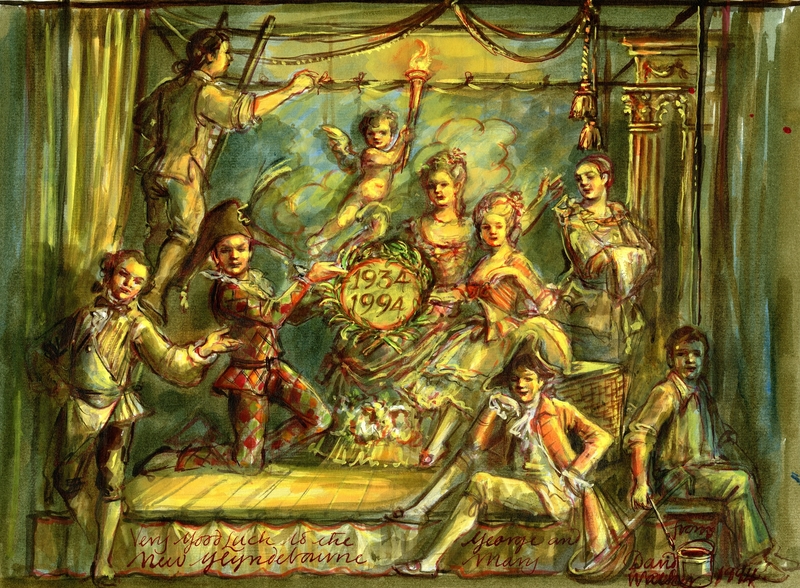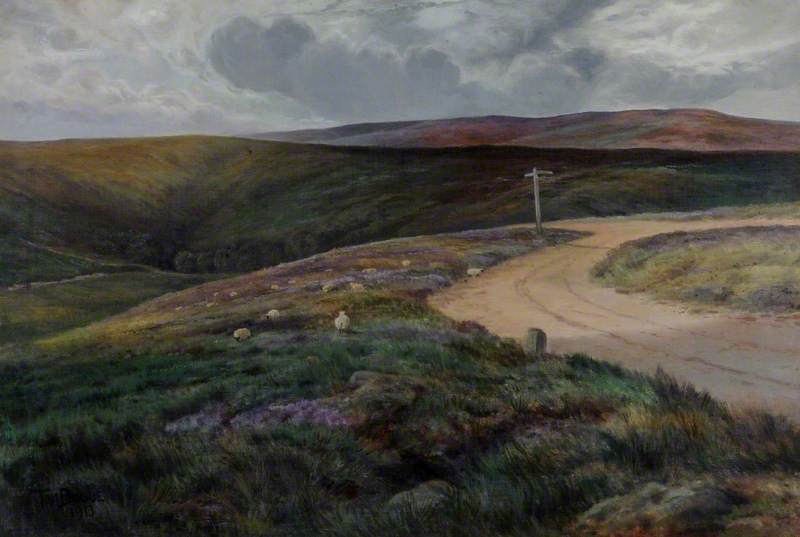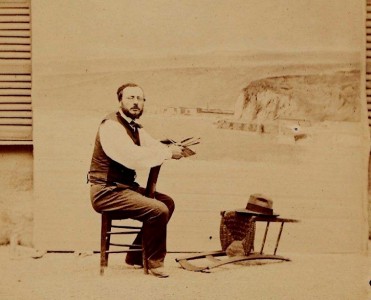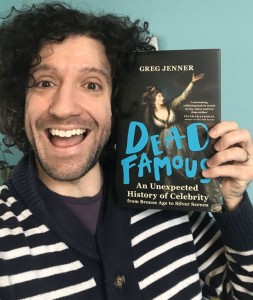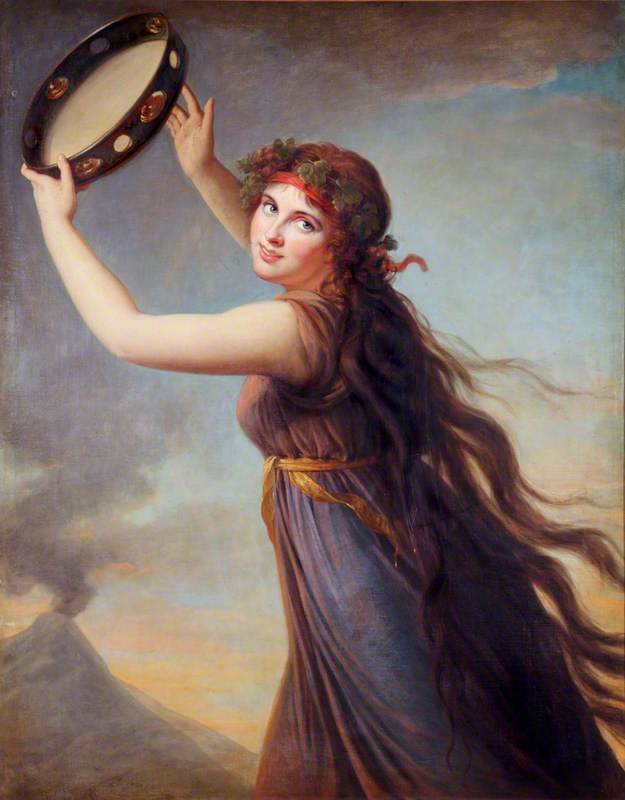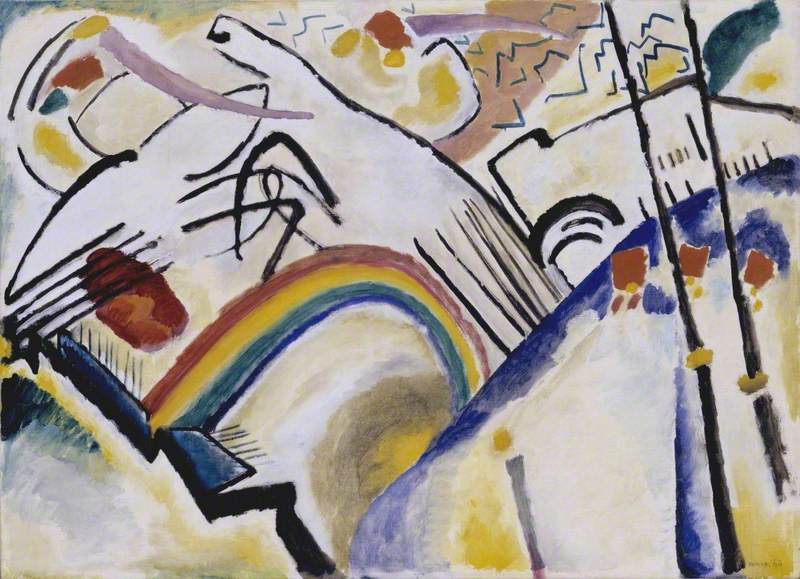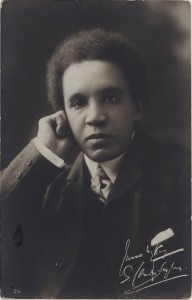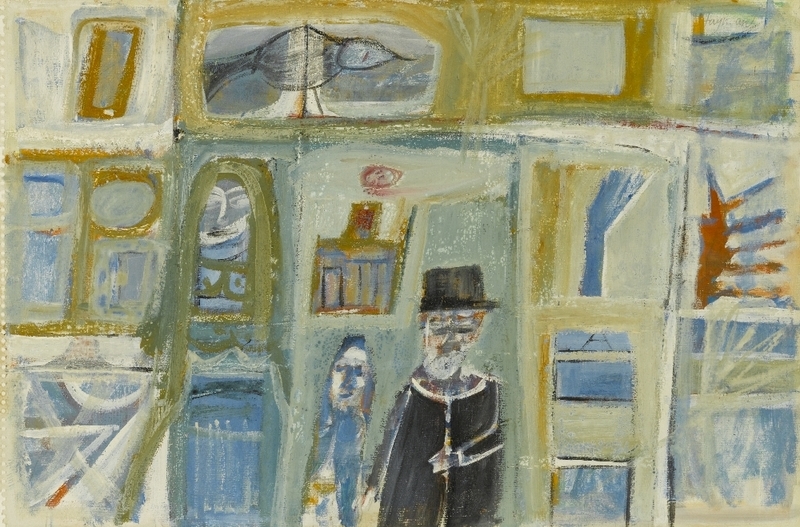The Royal Albert Hall is a world-famous building with 1.7 million people visiting it in person each year, but how many people stop to look up and appreciate the 500-square-metre mosaic frieze that wraps around the building?
Designed by seven different artists, the frieze has encircled the Hall for almost 150 years. It depicts the developments in the arts and sciences, as had been promoted at the 1851 Great Exhibition in nearby Hyde Park.
Royal Albert Hall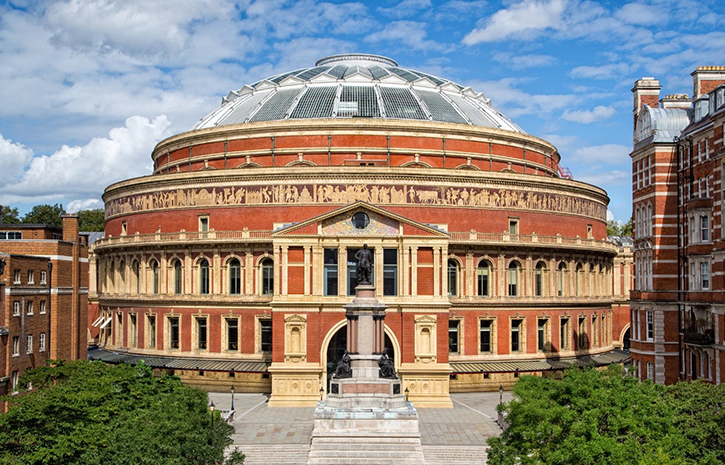
The idea for a flat pictorial mosaic to circle the exterior of the Hall was decided on in 1868. Seven artists were chosen and 16 final drawings were completed by 1870. To be able to translate the drawings into large scale mosaic panels, the drawings were photographed by Sergeant Spackman of the Royal Engineers. These were then projected using a magic lantern at the full dimension onto paper, where the outlines were traced.
Female students of the mosaic class at the South Kensington Museum (now the Victoria and Albert Museum) then used terracotta tesserae made by Minton to create the mosaics in sections, which were then taken up the road and set into place: 25 metres from the ground and stretching around the entire 244-metre circumference of the Hall, ready for Queen Victoria's visit to open the building on 29th March 1871.
The subject matter depicted by the frieze is extensive – below is a list of the 16 sections with details showing some of my own personal favourite imagery.
Edward Armitage (1817–1896)
Armitage was best known as a history painter. His father was a wealthy industrialist from the north of England, but the artist was born in London. As the oldest of seven sons, Edward Armitage had to convince his family to support him in a career in the arts. He trained in Paris under Paul Delaroche. In 1855, the artist visited the Crimea to make sketches for battle pictures.
The Triumph of Arts and Letters – Princes, Art Patrons and Artists
c.1869–1870
Edward Armitage (1817–1896) 
The Triumph of Arts and Letters – Philosophers, Sages and Students
c.1869–1870
Edward Armitage (1817–1896) 
'Infancy of Arts and Sciences' detail and mosaic section, with a dinosaur fossil
c.1869–1870 by Edward Armitage (1817–1896) 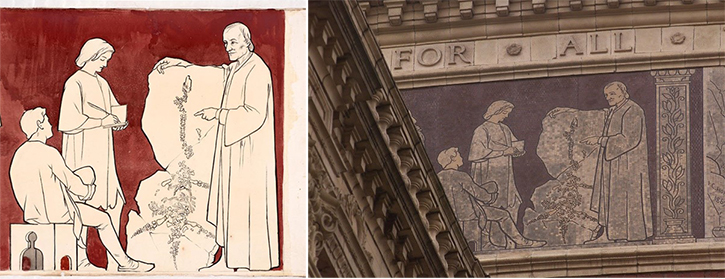
Henry Hugh Armstead (1828–1905)
Primarily known as a sculptor and illustrator, Henry Hugh Armstead was born in London to John Armstead, an engraver from whom Henry received his early training. He went to work at a silversmith at the age of 18, but eventually his career shifted into sculpture rather than metalworking.
The Triumph of Arts and Letters – The Mechanical Powers
1870
Henry Hugh Armstead (1828–1905) 
'The Mechanical Powers' detail and mosaic section, with Archimedes seated upon his screw
c.1869–1870 by Henry Hugh Armstead (1828–1905) 
John Callcott Horsley (1817–1903)
Nephew of the landscape painter Augustus Wall Callcott, John Callcott Horsley was a genre and historical painter. Opposed to the use of nude life models, he earned the nickname 'Clothes-Horsley' – yet faced controversy himself: he was the creator of the first Christmas card, which featured an image of a young child drinking wine.
The Triumph of Arts and Letters – Engineering
1869
John Callcott Horsley (1817–1903) 
'Engineering' detail, showing a locomotive, surveyors and telegraph wires
c.1869–1870 by John Callcott Horsley (1817–1903) 
Frederick Richard Pickersgill (1820–1900)
John Ruskin called him 'a Pre-Raphaelite in purpose' – Pickersgill was generally known as a genre and history painter, and an illustrator. His father Richard Pickersgill was a naval officer and amateur painter, and his mother was the sister of the artist William Frederick Witherington.
The Triumph of Arts and Letters – Pottery and Glassmaking
c.1869–1870
Frederick Richard Pickersgill (1820–1900) 
The Triumph of Arts and Letters – Music
c.1869–1870
Frederick Richard Pickersgill (1820–1900) 
The Triumph of Arts and Letters – Sculpture
c.1869–1870
Frederick Richard Pickersgill (1820–1900) 
The Triumph of Arts and Letters – Painting
c.1869–1870
Frederick Richard Pickersgill (1820–1900) 
The Triumph of Arts and Letters – Infancy of the Arts and Sciences
c.1869–1870
Frederick Richard Pickersgill (1820–1900) 
Edward John Poynter (1836–1919)
President of the Royal Academy, Poynter is known for his large-scale, historical paintings. He often depicted King Solomon in his work, and this, along with his association with Rudyard Kipling, has led historians to think he was a Freemason. Poynter married the Scottish society beauty Agnes MacDonald.
'Nations of the World...' detail, showing Britannia
c.1869–1870 by Edward John Poynter (1836–1919) 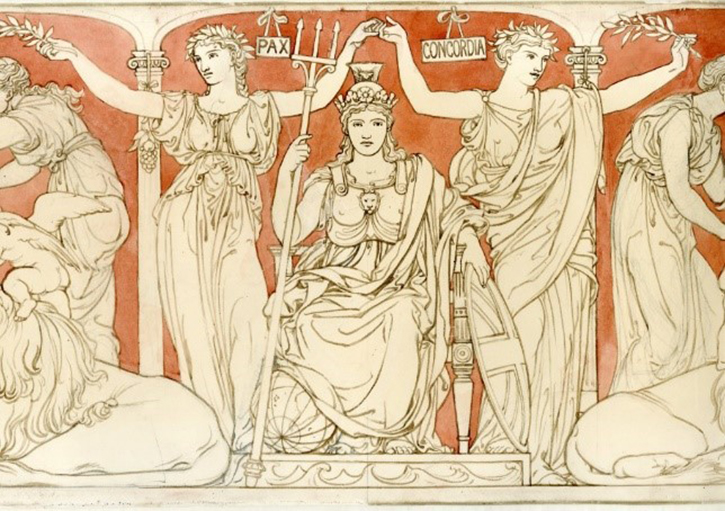
Henry Stacy Marks (1829–1898)
The artist at first specialised in painting medieval and Shakespearian scenes, yet moved onto making more decorative art depicting birds and landscapes. A Londoner, Marks learned painting first from his father – a solicitor-turned-coachbuilder. The artist was a member of the St John's Wood Clique, known for their love of practical jokes.
The Triumph of Arts and Letters – Agriculture
c.1869–1870
Henry Stacy Marks (1829–1898) 
The Triumph of Arts and Letters – Horticulture and Land Surveying
c.1869–1870
Henry Stacy Marks (1829–1898) 
The Triumph of Arts and Letters – Astronomy and Navigation
c.1869–1870
Henry Stacy Marks (1829–1898) 
William Frederick Yeames (1835–1918)
Yeames was born in Russia (the son of a British consul) and died in Devon. He is perhaps best known for his oil painting And When Did You Last See Your Father? at the Walker Art Gallery, showing a Parliamentarian questioning a young boy in a Royalist household.
The Triumph of Arts and Letters – Workers in Stone
1869
William Frederick Yeames (1835–1918) 
The Triumph of Arts and Letters – Workers in Wood and Brick
c.1869–1870
William Frederick Yeames (1835–1918) 
The Triumph of Arts and Letters – Architecture
c.1869–1870
William Frederick Yeames (1835–1918) 
'Architecture' detail and mosaic section, with Peterborough Cathedral
c.1869–1870 by William Frederick Yeames (1835–1918) 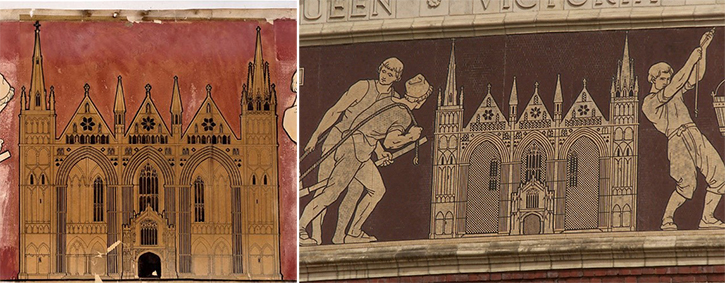
So if you're at the Proms, or find yourself round Kensington way for any other reason, don't forget to look up!
Liz Harper, Archive Manager, Royal Albert Hall

